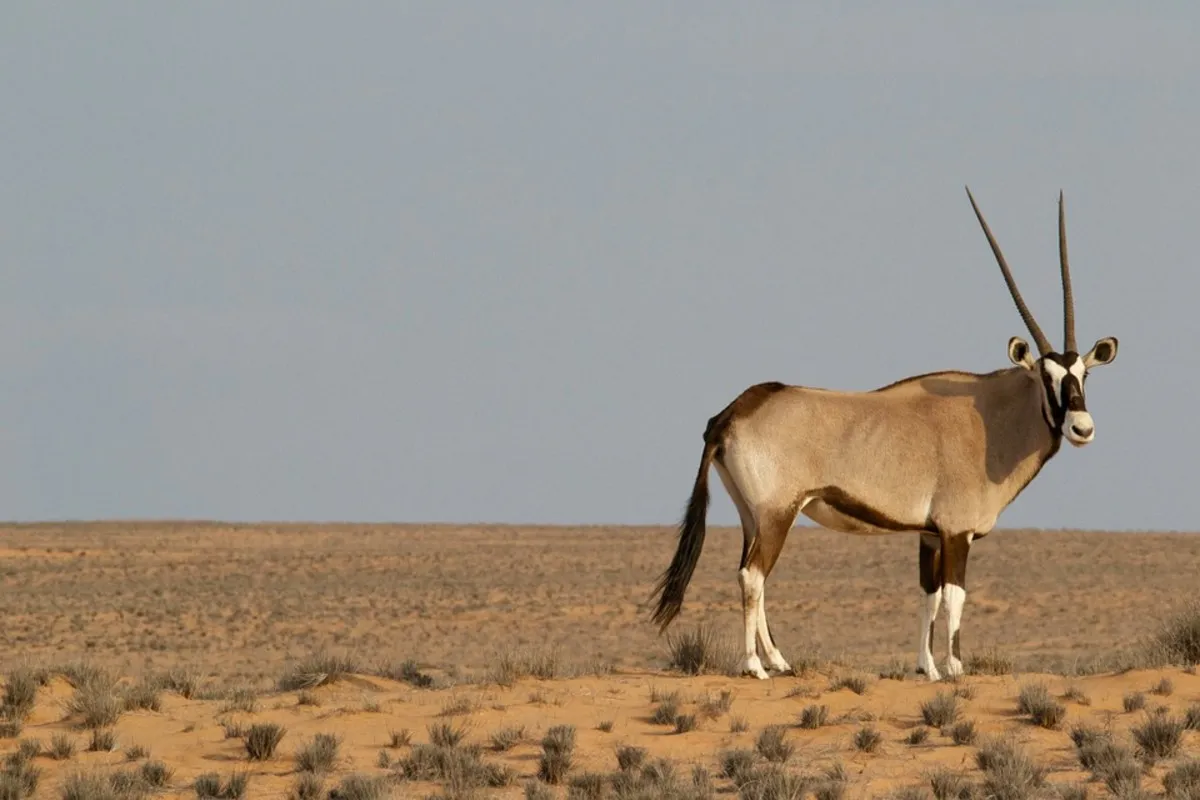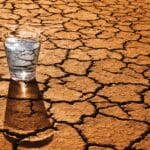When we picture a desert, we often envision a desolate expanse devoid of life. This couldn’t be further from the truth! Even amidst the harsh conditions of scorching sun and limited water, a fascinating array of animals have not only found ways to survive but to thrive. These remarkable creatures have, over millennia, developed incredible adaptations that allow them to navigate the challenges of desert life. So, let’s embark on a journey to meet these resilient desert dwellers and unravel the secrets behind their survival.
Abiotic Animals in the Desert: A Contradiction in Terms
The very phrase “abiotic animals” presents a contradiction. Why? Because the term “abiotic” refers to the non-living components of an ecosystem, such as sunlight, temperature, and soil composition. These factors, while not alive themselves, are fundamental to shaping the environment and influencing the plants and animals that call a desert home.
Deserts are notorious for their aridity. Low rainfall, coupled with high evaporation rates due to the intense heat, makes water retention a constant challenge for desert life. Furthermore, the extreme temperature fluctuations between the scorching day and surprisingly chilly night present an additional hurdle for organisms accustomed to more temperate climates.
Yet, life finds a way. Desert plants and animals exhibit remarkable adaptations that allow them not just to survive, but to flourish in these challenging conditions. For instance, many plants have developed deep root systems that tap into underground water sources, while others, like cacti, have evolved to store water within their tissues. Many desert animals have adopted a nocturnal lifestyle, limiting their activity to the cooler hours of the night to avoid the intense daytime heat.
Scientists are constantly uncovering new insights into these adaptations. Recent research, for example, suggests that some desert beetles can extract moisture directly from the air, a remarkable feat of evolutionary engineering. This underscores a crucial point: understanding the abiotic factors at play in an ecosystem is paramount to comprehending how living organisms have adapted to survive and thrive within it. In the case of deserts, the resilience and ingenuity of life in the face of such challenges continue to captivate and inspire further exploration.
What Defines Desert Ecosystems?
Deserts, often misconceived as barren wastelands, are in reality vibrant ecosystems teeming with life that has adapted to thrive in the face of adversity. These unique habitats are characterized by their extreme aridity, receiving minimal rainfall and experiencing high evaporation rates due to intense sunlight and low humidity. Despite these harsh conditions, deserts host a surprisingly diverse range of plant and animal life, each species demonstrating remarkable adaptations to survive and reproduce in these demanding environments.
While the image of a desert often conjures up visions of endless sand dunes under a scorching sun, the reality is far more nuanced. Deserts exhibit a surprising diversity in terms of climate and geography, encompassing hot and dry deserts, semi-arid regions, coastal deserts, and even cold deserts found at high altitudes or latitudes. Each of these desert types harbors unique plant and animal communities shaped by the specific abiotic factors of their environment.
The heart of desert ecology lies in understanding the intricate interplay between the living organisms that call these environments home and the non-living factors that shape their existence. Factors such as temperature fluctuations, water scarcity, soil characteristics, and topography play a crucial role in determining the distribution, abundance, and adaptations of desert species.
The importance of deserts extends far beyond their unique biodiversity. These ecosystems provide valuable services, acting as carbon sinks that help regulate the global climate and offering habitats for a wide array of plant and animal life found nowhere else on Earth. However, deserts face increasing threats from human activities, including climate change, overgrazing, and habitat destruction. Understanding these threats is crucial for developing effective conservation strategies to protect these fragile ecosystems for future generations.
How Do Abiotic Factors Shape Desert Life?
Deserts, characterized by their extreme aridity, present a unique set of challenges to life. It is the abiotic, or non-living, factors –– low rainfall, extreme temperature fluctuations, nutrient-poor soil, and intense sunlight –– that dictate the rhythm of life in these seemingly barren landscapes. Yet, desert organisms, through a delicate dance of adaptation, have evolved remarkable strategies to not only survive but to flourish under these harsh conditions.
Water Scarcity: The Driving Force of Desert Adaptations
Perhaps the most defining feature of deserts is the scarcity of water. Low rainfall, coupled with rapid evaporation due to high temperatures, makes every drop a precious commodity. This scarcity has driven the evolution of incredible water conservation strategies in desert organisms. Plants, like the iconic saguaro cactus, have evolved succulent tissues that store water, enabling them to endure long periods of drought. Some animals, like the kangaroo rat, have developed the ability to extract moisture from their food, minimizing their reliance on free-standing water sources. Many desert animals, including numerous reptile and insect species, have adapted to conserve water by producing highly concentrated urine and minimizing water loss through respiration.
Temperature Extremes: A Test of Resilience
Living in a desert means enduring a daily rollercoaster of temperature extremes. The scorching heat of the day can give way to surprisingly frigid nights, challenging the very limits of physiological tolerance. To cope with this, many desert animals have adopted behavioral adaptations, such as seeking shade during the hottest parts of the day and becoming active during the cooler hours of the night. Some animals, like certain species of desert lizards, have even evolved the ability to adjust their internal body temperature to match their surroundings, a remarkable feat of thermoregulation.
Nutrient-Poor Soil: Finding Sustenance in Scarcity
The arid conditions of deserts, while challenging for plant growth, also contribute to nutrient-poor soil. The lack of moisture hinders the decomposition of organic matter, limiting the availability of essential nutrients for plant life. Despite this, desert plants have developed an arsenal of adaptations to thrive in these nutrient-deprived environments. Some plants have evolved deep root systems that extend far and wide in search of water and nutrients, while others have formed symbiotic relationships with fungi that help them access otherwise unavailable nutrients from the soil. Animals, too, have adapted to the limited food resources available in deserts, with some herbivores, like the desert tortoise, able to survive on a diet of tough, fibrous plants.
Sunlight’s Double-Edged Sword: Energy and Endurance
Sunlight, the lifeblood of our planet, bathes deserts in abundance. While essential for plant photosynthesis, this constant exposure to intense solar radiation poses a serious threat of overheating and dehydration for desert life. Plants have evolved a variety of strategies to cope with this solar onslaught, from developing reflective surfaces to deflect excess sunlight to reducing the size of their leaves to minimize water loss through transpiration. Many animals have adapted to limit their exposure to the harshest sunlight, seeking shelter during the hottest parts of the day and becoming most active at dawn and dusk when temperatures are more moderate.
The Delicate Balance Disrupted: Human Impact on Desert Ecosystems
Desert ecosystems, for all their harshness, are finely tuned systems where life exists in a delicate balance with its surroundings. This balance, however, is increasingly threatened by human activities. Damming rivers for irrigation reduces the flow of water to downstream desert ecosystems, impacting the availability of this precious resource for plants and animals. Land use changes associated with agriculture and urbanization fragment habitats and disrupt the delicate web of life that has evolved over millennia. Climate change, driven by human activities, is likely exacerbating the already extreme conditions in many deserts, leading to increased temperatures, altered precipitation patterns, and more frequent and intense droughts.
Exploring the Unknown: Ongoing Research and Future Discoveries
While we have learned much about how abiotic factors shape desert life, there is still much to discover about these fascinating and resilient ecosystems. Scientists are continually uncovering new insights into the intricate adaptations of desert organisms, the complex interplay between abiotic factors, and the impacts of human activities on these fragile environments. Ongoing research is crucial for developing effective conservation and management strategies to protect desert ecosystems and the unique biodiversity they support.
A Note of Wonder and a Call to Action
As we delve deeper into the wonders of desert life, we must remember that these ecosystems are both resilient and vulnerable. They have weathered the test of time, evolving and adapting to some of the harshest conditions our planet has to offer. Yet, they face growing threats from human activities, pushing them closer to their ecological limits. By understanding the delicate balance of abiotic factors and the remarkable adaptations of desert dwellers, we can cultivate a deeper appreciation for these unique and vital ecosystems and embrace our role as stewards in their protection.
What Adaptations Help Animals Survive in Deserts?
Deserts, with their unforgiving heat, limited water, and fluctuating temperatures, might seem like an unlikely place for life to thrive. Yet, animals have evolved an astonishing array of adaptations to not only survive but to flourish in these extreme environments. From physiological marvels to ingenious behavioral strategies, let’s explore the secrets behind their desert survival.
Bodies Built for the Desert
Over millennia, natural selection has sculpted the bodies of desert animals to withstand the challenges of their environment. These adaptations are often key to their survival:
- Water storage: Some desert animals, like the iconic camel, have evolved to store water in their bodies, allowing them to endure long periods without drinking. Camels, for instance, store fat in their humps, which can be metabolically broken down to produce water when needed. Other animals, such as certain species of frogs, store water in their bladders or even in specialized tissues, creating internal reservoirs that can be tapped during times of drought.
- Minimizing water loss: Desert dwellers have evolved a variety of mechanisms to conserve water, a precious resource in arid environments. Many desert reptiles, for example, have thick, scaly skin that acts as a barrier to water loss, reducing evaporation. Some animals, like kangaroo rats, produce highly concentrated urine, minimizing water loss through excretion.
- Specialized diets: Food can be a vital source of water in the desert, and many animals have adapted their diets accordingly. Some desert birds, like doves, obtain moisture by feeding on succulent plants, while others, like the thorny devil lizard, have developed specialized scales that collect dew, channeling it towards their mouths.
Behaving Smart to Beat the Heat
Survival in the desert isn’t just about physical adaptations; it’s also about behaving in ways that minimize exposure to the harshest conditions. Many desert animals have evolved behavioral strategies that help them regulate their body temperature and conserve water:
- Nocturnal living: Many desert animals avoid the scorching daytime heat by becoming active at night when temperatures are cooler. Owls, bats, and many species of rodents have adopted this nocturnal lifestyle, hunting and foraging under the cover of darkness.
- Seeking shelter: When the sun is at its peak, finding shelter becomes crucial for survival. Many desert animals, including lizards, snakes, and insects, seek refuge in burrows, under rocks, or even in crevices, taking advantage of the cooler, more stable temperatures found underground or in shaded areas.
- Conserving energy: Desert environments, with their limited food and water resources, demand energy conservation. Many desert animals have adapted to move slowly and deliberately, conserving their energy for essential activities like foraging and reproduction.
The Science of Saving Water: It’s in the Details
Desert animals have evolved an array of physiological adaptations that allow them to thrive in arid environments:
- Reduced sweating: Unlike their counterparts in more temperate climates, many desert animals have fewer sweat glands. This might seem counterintuitive, but reducing sweating minimizes water loss through evaporation, a crucial adaptation in a water-scarce environment.
- Concentrated urine: Desert animals have evolved highly efficient kidneys that produce concentrated urine, minimizing water loss during excretion. The color of an animal’s urine can be a good indicator of its hydration status, with darker urine signifying a higher concentration and greater water conservation.
The Desert: A Never-Ending Story of Adaptation
The adaptations of desert animals offer a fascinating glimpse into the power of natural selection to shape life in even the harshest of environments. These creatures have evolved ingenious strategies to cope with extreme heat, water scarcity, and limited food availability, demonstrating the remarkable resilience of life on Earth. As we continue to study and learn from desert-dwelling animals, we gain a deeper appreciation for the interconnectedness of life on our planet and the importance of conserving these unique and fragile ecosystems.
Want to Learn More?
Curious to delve deeper into the wonders of desert ecosystems? Explore these resources:
- Deserts in Africa: Uncover the diverse landscapes and unique ecosystems of Africa’s deserts.
- Desert Bugs: Explore the fascinating world of insects and other invertebrates that thrive in desert environments.
- Water in the Desert: Discover how desert organisms adapt to survive on limited water resources.
- Non Living Things in the Desert: Learn about the abiotic components that shape desert ecosystems, from rocks and sand to climate.
- California Desert Region Facts: Explore the unique flora, fauna, and geological features of California’s desert regions.
- Desert Flora: Discover the surprising diversity and resilience of plant life in desert environments.
- Abiotic Components of Desert: Delve into the physical and chemical factors that define desert ecosystems.














